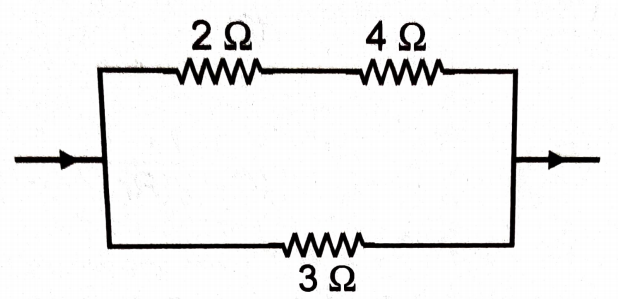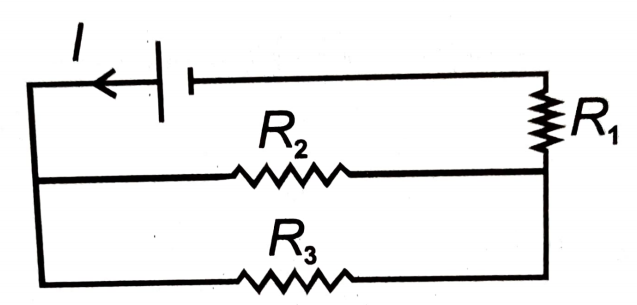A piece of wire is cut into four equal parts and the pieces are bundled together side by side to form a thicker wire. Compared with that of the original wire, the resistance of the bundle is:
1. The same
2. as much
3. as much
4. as much
The temperature coefficient of resistance of a wire at is . At , its resistance is one ohm. The resistance of the wire will be 1.2 ohms at:
1. 225 K
2.
3.
4. 185 K
At conductor behaves as a superconductor
1. Above the critical temperature
2. At the critical temperature
3. At
4. At the boiling point of that metal
A carbon resistor has coloured strips as shown in the figure. What is its resistance?
1.
2.
3.
4.
A wire has a resistance of 12 ohms. It is bent in the form of a circle. The effective resistance between the two points on any diameter of the circle is:
1.
2.
3.
4.
A technician has only two resistance coils. By using them singly, in series or in parallel, he is able to obtain the resistance 3, 4, 12 and 16 ohms. The resistance of the two coils are:
1. 6 and 10 ohms
2. 4 and 12 ohms
3. 7 and 9 ohms
4. 4 and 16 ohms
The resultant resistance value of n resistors, each of r ohms and connected in series is x. When those n resistors are connected in parallel, the resultant value is
1.
2.
3.
4.
The same mass of aluminium is drawn into two wires; 1mm and 2mm thick. Two wires are connected in series and current is passed through them. The heat produced in the wires is in the ratio of
1. 16 : 1
2. 8 : 32
3. 8 : 2
4. 4 : 2
In a circuit shown in the figure, the heat produced in 3 ohm resistance due to a current flowing in it is 12 J. The heat produced in 4 ohm resistor is:

1. 2 J
2. 4 J
3. 64 J
4. 32 J
Refer to the circuit shown. What will be the total power dissipation in the circuit if P is the power dissipated in R1? It is given that and .

1. 4P
2. 7P
3. 13P
4. 17P







